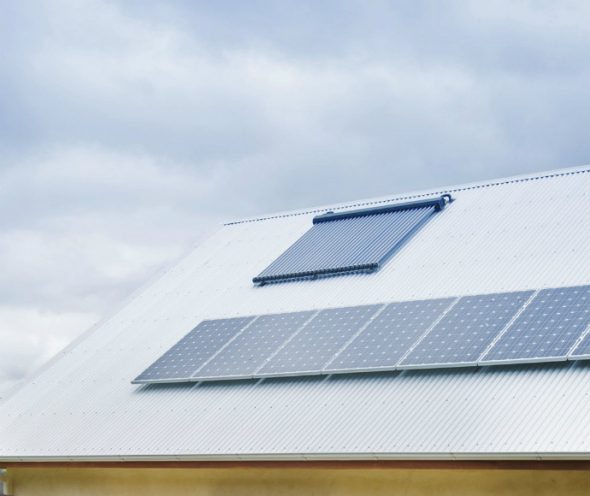One Step Off The Grid Much of the buzz in Australia’s clean energy industry centres around the nascent – but rapidly evolving – home battery storage market. But what about rooftop solar?
Much of the buzz in Australia’s clean energy industry centres around the nascent – but rapidly evolving – home battery storage market. But what about rooftop solar?
According to some industry experts, the mass adoption of solar PV by Australian homes and businesses – and the efficient and smart management of this asset – has only just begun, as prices reach levels that appeal to the late majority, and as early adopters look to upsize their systems.
Speaking at the All-Energy Australia conference in Melbourne last week, Solar Analytics founder Stefan Jarnason said that the nation’s status as a world leading adopter of home solar hid the fact that many of the 1.7 million systems installed on residential rooftops were actually relatively small, and would need upgrading.
Jarnason, who chaired an industry panel discussion on Thursday at the conference, said the industry had lost sight of what Australian customers really needed right now, as new technology steamed ahead of reality.
And in this case, the reality was extraordinarily high electricity prices.
“We’ve got 1.7 million Australians with (a home solar system)… (but) over 600,000 of those people have a system that is under 1.5kW.
“So… you’ve got to think there are … 10 million homes that could still get a bigger better system, before you even start thinking about (battery) storage.
“We are only just at the very, very start.”
Zvi Lando, head of global sales for inverter giant SolarEdge, also believes there is plenty of growth to go in Australia’s home and commercial solar markets, not only in harvesting the energy, but in helping households to make the most of that energy – and not necessarily by storing it in a battery.
“The current dynamic is very positive from our perspective,” Lando told RenewEconomy in an interview at the conference on Wednesday. “Our core of the market is still your everyday PV installations.
“One of the things we’re showing here (at the exhibition) are a set of solutions to increase solar self consumption… without batteries,” he added – although noting that the company’s main inverter offering has been compatible with a broad range of battery brands for more than two years now.
“For instance …a controller for immersion water heaters that is managed by the inverters, so when you have excess energy available, it turns on the heater and heats the water. …So it’s a cheap and pretty efficient battery.
“We also have plugs or switches that …will activate your pool pump when you have the energy available for it.
“So (battery) storage is kind of the extreme, but there are alternatives of making better use of the energy that are cheaper and more simple to implement.”
“We see good adoption of these type of technologies in other markets, in Europe, so we believe that it has good potential for the Australian market. But it’s not something that we see in meaningful numbers (in Australia). We’re not there yet,” he said.
“On the residential side, this is the main message. So our standard (solar) solution, that the market is used to, and that we are seeing good adoption (of). And then on top of that, the consumption enhancement-type solutions.”
This article was originally published on RenewEconomy’s sister site, One Step Off The Grid, which focuses on customer experience with distributed generation. To sign up to One Step’s free weekly newsletter, please click here.








